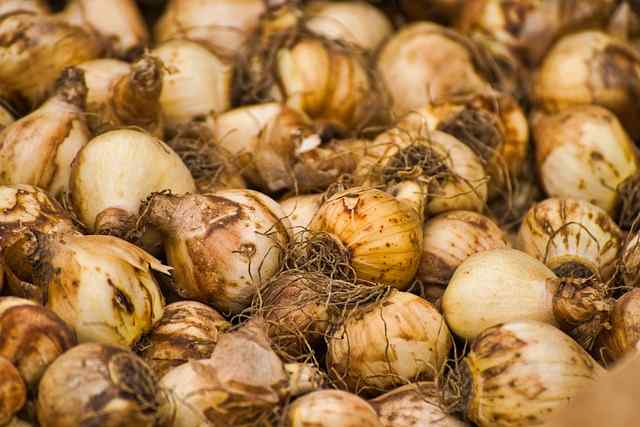In this comprehensive exploration of tulips and their frost tolerance, the effects of cold temperatures, frost protection strategies, and how you can cultivate these beautiful flowers to thrive despite frosty conditions.
Tulips and Their Frost Tolerance

Many tulip species exhibit a surprising degree of frost tolerance. Generally, tulips can withstand light frosts (temperatures down to about 28°F or -2°C) without significant damage. Some varieties, especially those bred for northern climates, have adapted to not only survive but also to thrive in conditions where late frosts occur. For instance, certain Darwin hybrids and Triumph tulips are known for their ability to endure cooler temperatures, ensuring that they flourish despite the unpredictable spring climate.
It’s essential to recognize that while tulips can tolerate some frost, the extent of their resilience varies with the specific conditions surrounding them. Factors such as the duration of the frost, the moisture level in the soil, and the overall health of the plant play critical roles in determining how well tulips can endure chilling temperatures.
Protecting Tulips from Spring Frost

For gardeners eager to ensure their tulips thrive despite potential frost, a few proactive strategies can make all the difference. Here are some practical tips to protect your tulips:
Site Selection
Choosing the right location for tulips can significantly influence their frost survival. Planting in raised beds or mounds can improve drainage and reduce the chances of frost settling. Additionally, consider planting tulips in a location that receives morning sunlight; the warmth from the rising sun can help melt frost quickly, reducing potential damage.
Mulching
Applying a layer of mulch around your tulips can insulate the soil and create a protective barrier against frost. Organic mulches like straw, wood chips, or shredded leaves can help retain heat, keeping the ground temperature slightly warmer during cold nights.
Covering Tulips
When you anticipate a frost, a simple yet effective method is to cover your tulips. You can use lightweight frost cloths, burlap, or even old bedsheets to shield your flowers from icy temperatures. Ensure that the coverings do not weigh down the plants; instead, use stakes or a frame to keep the material elevated above the foliage.
Watering Before Frost
Interestingly, watering your tulips before a frost can create a microclimate that helps protect them. Moist soil retains heat better than dry soil, providing a buffer against cold air temperatures. However, this should be done carefully to avoid waterlogging, which can lead to bulb rot.
Fertilization Timing
Providing the right nutrients at the correct times can also enhance tulip resilience. Fertilizing in early spring, just as your tulips are starting to emerge, ensures they have the necessary nutrients to grow strong and adapt to challenging conditions. Avoid heavy fertilizers, as excessive nitrogen can lead to tender growth, making the plants more susceptible to frost damage.
When Are Tulips Most Vulnerable to Frost?

Understanding the timing of tulip growth cycles can provide valuable insight into when they are most vulnerable to adverse weather conditions. Tulips typically break dormancy in late winter or early spring. This emergence often coincides with fluctuating temperatures, making them particularly susceptible to late-season frosts.
The critical period for frost vulnerability usually occurs during their blooming phase, which can extend from March to May, depending on the species and climate. Notably, tulips that bloom early in the season are more at risk of frost damage as they may be exposed to colder temperatures when they are most vulnerable, while later-blooming varieties may escape undamaged.
Climate variability adds another layer of complexity; increasingly erratic weather patterns caused by climate change may lead to unpredictable frosts that catch gardeners off guard. Staying informed about local weather forecasts and knowing when to implement protective measures can make a significant difference in tulip health.
Identifying Frost Damage in Tulips

Recognizing frost damage early can help you take appropriate remedial actions. Symptoms to watch for include:
Blackened Leaves or Petals: Frost-kissed foliage often appears blackened or water-soaked, a direct indicator of damage.
Wilting or Drooping Flowers: Affected tulips may droop or fail to stand upright due to cellular damage.
Shortened Flower Stems: If you notice shortened stems, this may be another sign of frost stress, especially if flowers fail to fully open.
Delayed Flowering: Damage can sometimes delay blooming, where flowers are slow to open or may not open altogether.
If you spot these symptoms after a frost, it’s essential to avoid immediate reactions like cutting off damaged parts. Allowing the plant to recover is crucial, as it may redirect energy into new growth.
Resilience and Rebound: Tulips After Frost

One of the most remarkable aspects of tulips is their incredible ability to recover from frost. Even when frost damages the flowers, tulips often bounce back remarkably well. Their bulb-based structure allows them to store energy and nutrients for a robust comeback. While the initial blossoms may be lost, the plants often regenerate healthy foliage, allowing them to continue growing and flowering in the subsequent seasons.
Here are a few reasons why tulips can make a strong recovery after frost:
Energy Storage in Bulbs
The bulbs of tulips contain energy reserves that help them recover from damage. As the plant redirects its focus toward repairing itself, these stored resources can be instrumental in fostering new growth.
Root Systems
Well-established tulip plants have developed strong root systems that can sustain the plant even after parts have been damaged. The underground network continues to draw nutrients and moisture, supporting new shoots.
Spring Conditions
Spring often brings longer days and warmer temperatures, which create favorable growing conditions. This phenomenon provides the ideal backdrop for tulips to flourish after a hiccup from frost damage.
Conclusion
So, can tulips survive frost? The answer is a resounding yes, though the degree of resilience varies among species and local conditions. By understanding the biology of tulips and implementing protective measures, gardeners can create a thriving environment for these beautiful flowers.





